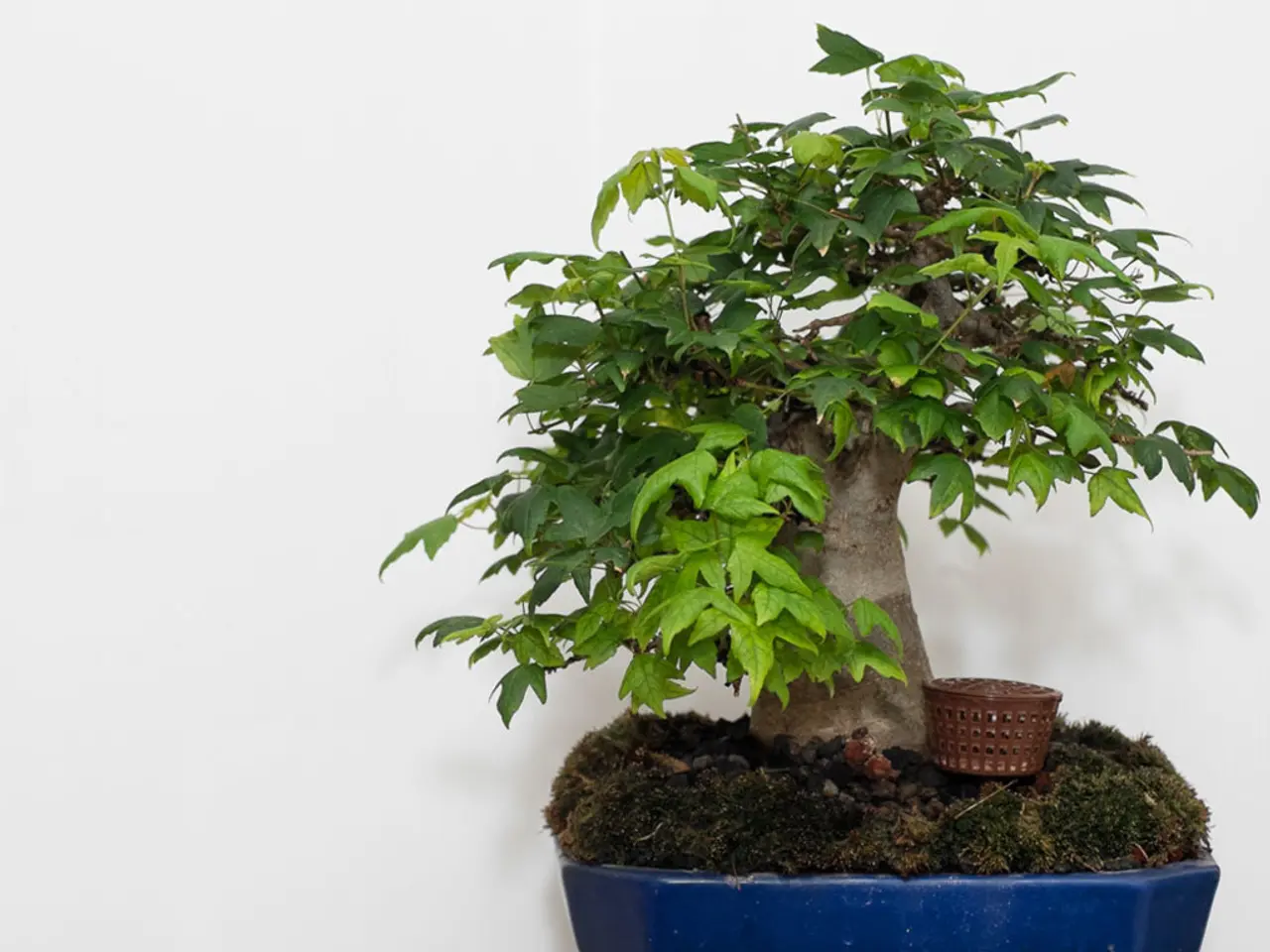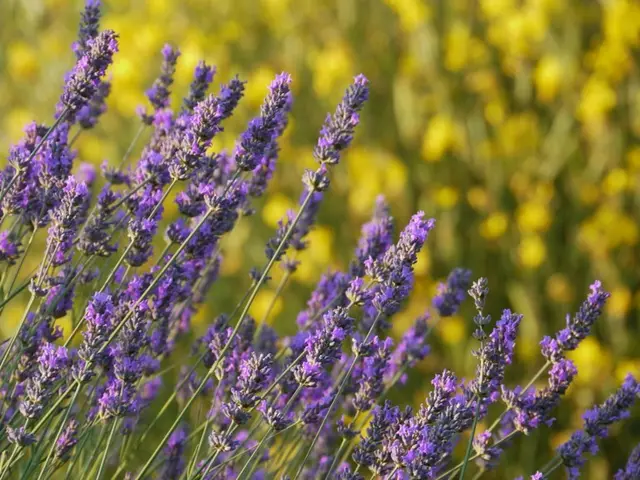Efficient Bonsai Soil Water Management: Methods and Techniques for Optimal Drainage
Creating and maintaining the ideal soil mix for bonsai trees is essential for their healthy growth and development. Here are some key practices to follow when preparing and caring for your bonsai soil.
Choose the Right Components
Inorganic materials such as akadama, pumice, lava rock, and fine gravel or volcanic stones are ideal for bonsai soil due to their excellent drainage properties. These materials prevent soil compaction and allow air to reach the roots, promoting healthy root growth.
Tailor the Soil Mix to the Species and Climate
Fast-draining soil is suitable for pines, consisting of pure granite chips or a mix of 1/3 Fuji sand, 1/3 Kiryu-zuna, and 1/3 Akadama. For moisture-loving species like maples, a mix of about 70% akadama and 30% pumice provides the necessary moisture without waterlogging.
Avoid Organic Materials
Peat moss, compost, and other organic materials should be avoided as they degrade over time, compact soil, retain too much moisture, and can damage bonsai roots.
Consider Particle Size
Typical particle sizes for bonsai soil range from 1/8 to 3/8 inch, with consistent grading to promote drainage and aeration. Commercial mixes often use about 1/4 inch particles of calcined clay, lava rock, and pine bark fines.
Maintain a Balanced pH Level
A slightly acidic to neutral pH, typically between 6.0 and 7.0, is ideal for bonsai trees to optimize nutrient availability and healthy root growth.
Choose the Right Container and Soil Depth
Containers should match the root system size to avoid excessive moisture retention or root restriction. Plant the tree at the correct depth to balance root health and aeration.
Regular Maintenance
Periodically check and refresh the soil to prevent compaction and depletion of drainage properties. Replace or amend the soil mix every 1-2 years, depending on the species, growth rate, and soil breakdown.
Avoid Overwatering
Bonsai enthusiasts can employ tactics like checking the soil moisture, watering in the morning, using a well-draining potting mix, and monitoring plant signs to prevent overwatering.
Repotting and Soil Dryness Monitoring
Bonsai trees should be repotted every 2-5 years to maintain ideal drainage, preventing stagnation and ensuring the delicate balance of water and air. Soil dryness monitoring guarantees that the bonsai's roots receive the necessary oxygen, preventing waterlogging and promoting healthy growth.
Natural Soil Erosion Prevention Methods
Natural methods to prevent soil erosion in bonsai pots include using a layer of sphagnum moss or small rocks at the bottom of the pot, and incorporating organic matter like coconut coir or bark chips into the soil mix.
Akadama: A Superior Soil Component
Akadama, a Japanese clay, is renowned for its exceptional water-holding capacity and ability to improve aeration in bonsai soil mixes.
Balanced Moisture Environment
To achieve a balanced moisture environment, consider the following guidelines: water only when necessary, check the weather, monitor plant signs, and use a moisture meter. Overwatering can lead to root rot and other problems, highlighting the importance of careful attention to watering schedules.
Mindful Watering
A mindful approach to watering is essential in creating a harmonious balance in the bonsai's moisture environment, fostering healthy root growth and discouraging waterborne diseases. Effective watering frequency control requires striking a balance between hydration and drying, allowing the soil to breathe and the roots to absorb oxygen.
Shallow Pots and Drainage
Bonsai trees can adapt to shallow pots, but limited drainage poses significant risks, including waterlogging and root rot.
Gravel Layer and Regular Potting Soil
Adding a layer of gravel at the pot's bottom can improve drainage, but its effectiveness depends on the gravel's size, soil composition, and pot drainage holes, requiring careful consideration to avoid clogging. While it's tempting to modify regular potting soil with drainage materials, it's crucial to recognize that these soils are often dense and may not provide the ideal aeration and drainage required for bonsai trees.
In the world of bonsai cultivation, the harmony between tree and soil is delicate yet vital, and the balance of moisture and aeration is a constant negotiation. By following these best practices, bonsai enthusiasts can create the perfect soil mix for their trees, fostering healthy root systems and promoting beautiful, thriving bonsai.
To achieve a balanced lifestyle and home-and-garden experience, consider cultivating bonsai trees as both a hobby and a means of enriching your indoor environment. Gardening expertise gained from creating the ideal soil mix for bonsai trees can be a stepping stone to exploring home-and-garden projects, encouraging a fulfilling lifestyle rooted in nurturing and growth. After all, just as gardening in a home environment can contribute positively to one's mental well-being, so can the art of bonsai, with its emphasis on precision, patience, and harmony.




